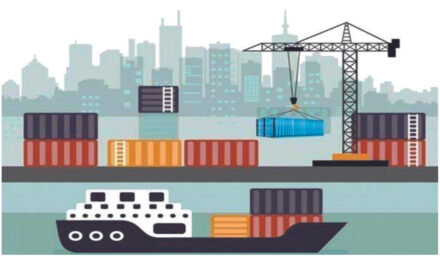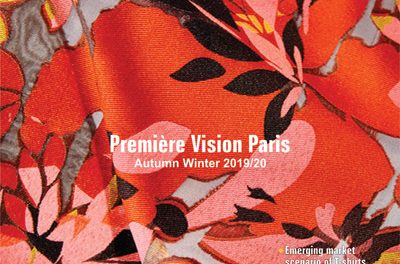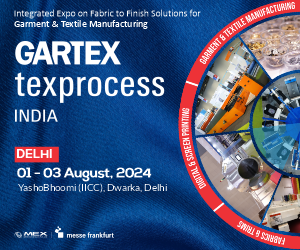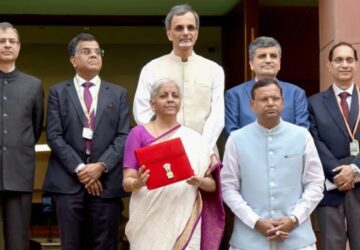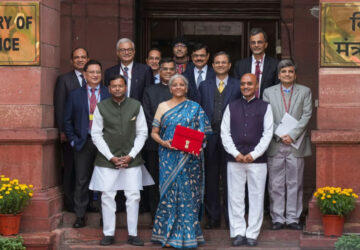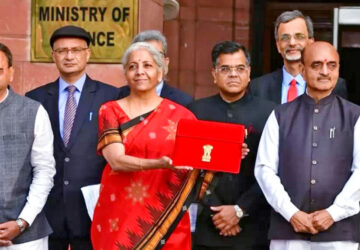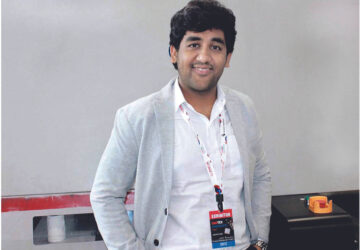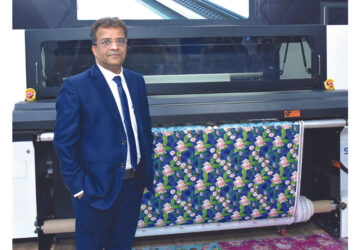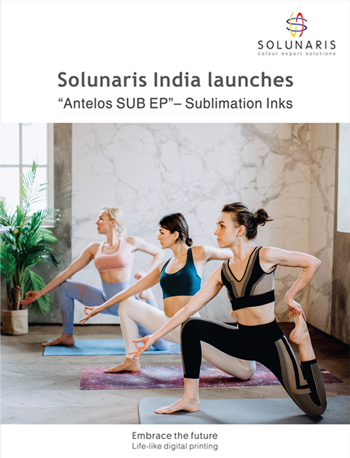Embroidery Lettering and Logos
For the Indian Embroidery industry, we usu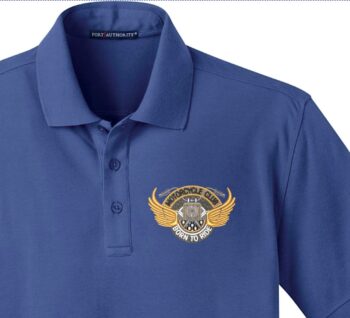 ally focus on traditional Fashion designs. Little is written about Commercial Embroidery, uniforms, sportswear, and children’s clothing. India’s corporate sector, military, police, private security companies, clubs, schools, and franchise shops, use logos with individual names embroidered on uniforms. India has 1.48 mn companies, and thousands of them use uniforms. The population reached 1.4 bn, and the Middle Class is estimated at around 350 mn. The statistics justify the need for a more robust discussion about commercial embroidery, and decorating garments with embroidery logos and letters.
ally focus on traditional Fashion designs. Little is written about Commercial Embroidery, uniforms, sportswear, and children’s clothing. India’s corporate sector, military, police, private security companies, clubs, schools, and franchise shops, use logos with individual names embroidered on uniforms. India has 1.48 mn companies, and thousands of them use uniforms. The population reached 1.4 bn, and the Middle Class is estimated at around 350 mn. The statistics justify the need for a more robust discussion about commercial embroidery, and decorating garments with embroidery logos and letters.
Small Designs – Mass Personalisation Reduce Costs
A significant difference between logos and fashion designs is the design size. While fashion designs have hundreds of thousands of stitches, logos have typically a few thousand. Logos can be digitized in less than an hour, sometimes even minutes because the design software has automated features, lettering, monogramming, motifs, and stitch fills.
As the industry has been growing into various niche markets, the production size has been getting smaller, customers order only a few garments. People do not want to see the same “stock design” on the street worn by others. They want custom designs only for themselves. They want their names on the garment. Embroidery businesses specializing in logos, have to be prepared to have small production runs and create many designs daily.
One of the problems with small jobs is the relatively high overhead in the order process, design, and production. In this article, we want to focus on cost savers in the online ordering process.
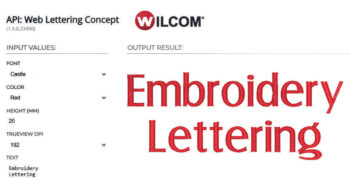 Online Ordering – your eCommerce Website
Online Ordering – your eCommerce Website
There are several benefits of having one’s own website, your customers do not have to be in the same city but can be anywhere. You can dramatically increase your business. Your website can provide Marketing (show products, offer promotions), Personalisation (offer personal decoration on garments), and Instant Quotation (based on the customer’s request), also, your website can calculate costs instantly, show the final design on the garment, and take the customer’s order (shopping cart). All this without a salesperson, with little cost.
What is an EWA (Embroidery Web API) call?
API stands for “Application Programming Interface”. This sounds technical enough, what is it used for? Imagine this: You want to create embroidery lettering but you do not have an embroidery design software. Yet, you can create this lettering by sending your text, font, thread color and letter size to a server somewhere, where there is an embroidery design engine working. This engine will take your data, produce the embroidery design and will send you back this design that you can send to your embroidery machine. Without a person doing any designing. That was an API call.
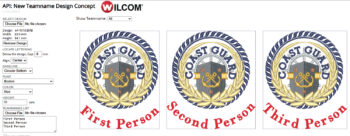
Even more: the server will send you the design data (number of stitches, color changes and trims), so your website program can automatically calculate the production costs, generates an instant quotation to your website customer. You can show the True View of this lettering on the garment. All this in seconds! Team Names – Uniform Customers.
Team Names – Uniform Customers
This feature is useful for a Club or School Logo but you want to make dozens or hundreds of different designs with different names. All you need is to upload the embroidery design and the names and the API call will automatically generate hundreds of separate designs.
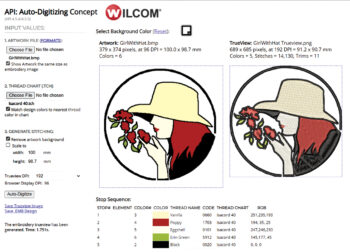 Autodigitizing – Instant Quotation on Artwork
Autodigitizing – Instant Quotation on Artwork
Apart from lettering jobs, you can also get orders instantly! The customer uploads the Artwork and the embroidery engine will Autodigitize it and return the True View image and design data. You can produce an Instant Quotation, show the image on the garment, and get the order! Then digitize the design for production-ready quality.
The above was only a quick overview of Embroidery API calls. You can do your own research on how to increase your business and save costs with new technologies.
(By Janos Horvath, Vice President International Sales, Wilcom)
 ally focus on traditional Fashion designs. Little is written about Commercial Embroidery, uniforms, sportswear, and children’s clothing. India’s corporate sector, military, police, private security companies, clubs, schools, and franchise shops, use logos with individual names embroidered on uniforms. India has 1.48 mn companies, and thousands of them use uniforms. The population reached 1.4 bn, and the Middle Class is estimated at around 350 mn. The statistics justify the need for a more robust discussion about commercial embroidery, and decorating garments with embroidery logos and letters.
ally focus on traditional Fashion designs. Little is written about Commercial Embroidery, uniforms, sportswear, and children’s clothing. India’s corporate sector, military, police, private security companies, clubs, schools, and franchise shops, use logos with individual names embroidered on uniforms. India has 1.48 mn companies, and thousands of them use uniforms. The population reached 1.4 bn, and the Middle Class is estimated at around 350 mn. The statistics justify the need for a more robust discussion about commercial embroidery, and decorating garments with embroidery logos and letters.

 Online Ordering – your eCommerce Website
Online Ordering – your eCommerce Website
 Autodigitizing – Instant Quotation on Artwork
Autodigitizing – Instant Quotation on Artwork